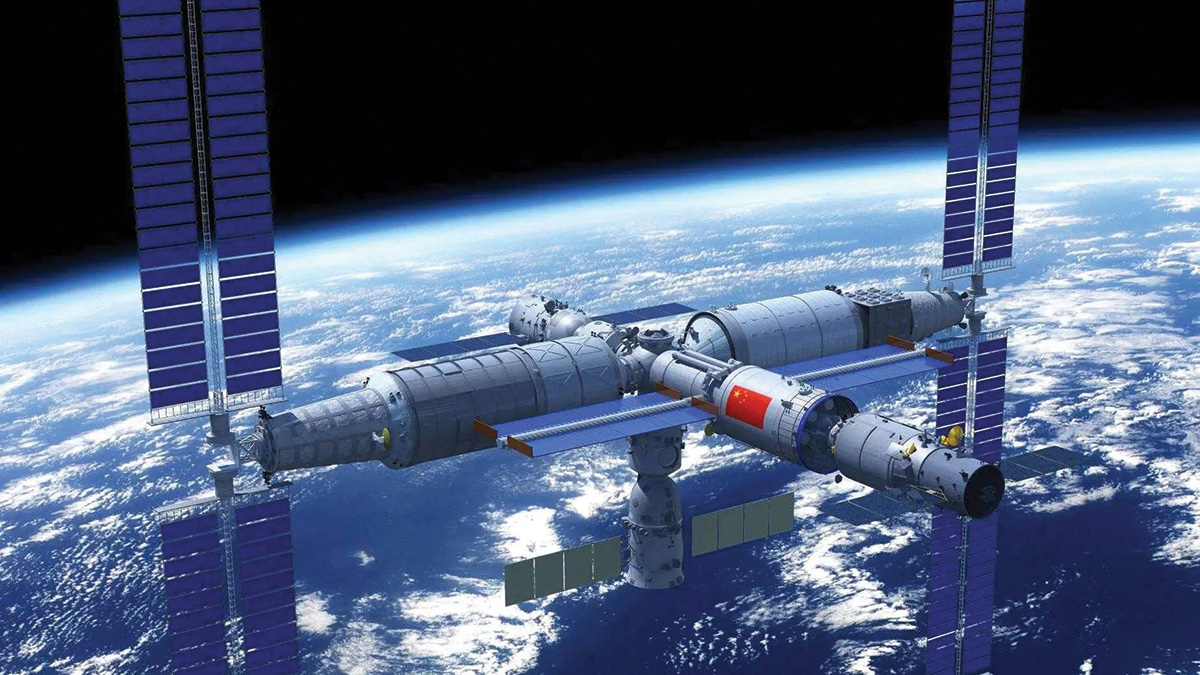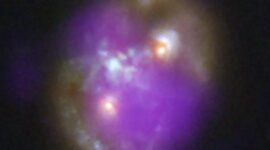WENCHANG, Hainan, China – July 15, 2025 – China has successfully launched a new batch of supplies, including advanced new spacesuits and other essential provisions, to its orbiting Tiangong space station. The Tianzhou-9 cargo spacecraft, carried by a Long March-7 Y10 rocket, blasted off from the Wenchang Spacecraft Launch Site in the southern island province of Hainan at 5:34 AM Beijing Time (00:34 IST) on Tuesday, July 15, 2025.
The launch was declared a complete success by the China Manned Space Agency (CMSA). Approximately ten minutes after liftoff, Tianzhou-9 separated from the rocket and entered its designated orbit, with its solar panels unfolding as planned. The cargo craft is now set to conduct an automated rendezvous and docking with the Tiangong space station, which is currently occupied by the three astronauts of the Shenzhou-20 mission.
This mission marks the ninth cargo resupply flight to support China’s astronauts in low Earth orbit and the fourth cargo resupply flight since the Tiangong space station entered its application and development phase. It also represents the 584th mission of the Long March rocket series, showcasing China’s consistent and growing prowess in space logistics.
New Generation of Spacesuits: Enhanced Lifespan and Performance
A key highlight of the Tianzhou-9 mission is the delivery of brand-new spacesuits. These upgraded suits feature a significantly extended operational lifespan, moving from a previous capacity of 15 spacewalks over three years to 20 spacewalks over four years. This enhancement is a crucial development for the long-term maintenance and expansion of the Tiangong station, allowing for more frequent and prolonged extravehicular activities (EVAs) by taikonauts.
The new spacesuits, an evolution of the existing Feitian series, are designed to further improve astronaut mobility and comfort during spacewalks. While specific technical details are often kept confidential, such advancements typically involve lighter and more durable materials, improved joint designs for greater flexibility, and enhanced life support systems to ensure astronaut safety and efficiency in the harsh vacuum of space. The ability to perform more spacewalks per suit directly translates to greater flexibility in conducting external repairs, upgrades, and scientific experiments on the station.
Upgraded Fitness Equipment: Combating Microgravity Effects
Beyond the groundbreaking spacesuits, Tianzhou-9 is also transporting a new set of core muscle training devices. This addition aims to further upgrade the space station’s gymnasium, providing taikonauts with more advanced tools to counteract the well-known effects of muscle atrophy and bone density loss in microgravity. Regular and effective exercise is vital for the health and well-being of astronauts during long-duration space missions. Improved equipment will contribute significantly to maintaining the physical fitness of the crew, ensuring they remain in optimal condition for their demanding tasks.
Comprehensive Cargo for Sustained Operations
The Tianzhou-9 freighter is carrying a substantial payload of approximately 7.2 tons (6.5 metric tons) of cargo. This includes a wide array of essential supplies necessary for the continued operation and scientific endeavors on the Tiangong space station. The manifest typically comprises:
- Consumables for the orbiting crew: This includes fresh food, water, and other daily necessities to support the Shenzhou-20 crew, ensuring their comfort and sustenance during their mission.
- Propellant: Crucial for maintaining the station’s orbit, performing reboost maneuvers, and executing any necessary attitude adjustments.
- Equipment for application experiments and tests: This category includes scientific payloads, research materials, and tools for ongoing and new experiments in various fields, such as space life sciences, microgravity fluid physics, material science, and fundamental physics.
- Spare parts and maintenance tools: Essential for any repairs or routine maintenance required on the station’s systems and modules.
The delivery of these diverse supplies underscores China’s commitment to the sustained operation and scientific utilization of its Tiangong space station.
Tiangong: China’s Independent Orbital Outpost
The Tiangong space station, which translates to “Heavenly Palace,” is China’s independently built and operated modular space station in Low Earth Orbit (LEO), approximately 340 to 450 km above Earth. The station officially began its construction in April 2021 with the launch of its core module, Tianhe. Two science modules, Wentian and Mengtian, followed in 2022, completing the station’s initial three-module configuration by October 2022.
While smaller than the International Space Station (ISS), Tiangong is a formidable orbital laboratory, serving as a platform for extensive scientific and technological experiments. It features 23 enclosed experiment racks and platforms for exposed experiments on its Wentian and Mengtian laboratory modules. China has also expressed intentions to expand the Tiangong station in the coming years, potentially adding more modules and capabilities.
The Tiangong program is a testament to China’s ambition and self-reliance in space exploration. It is independent of any other international space programs, reflecting China’s long-term strategic vision for its manned spaceflight endeavors. The regular and successful resupply missions, like Tianzhou-9, are critical to ensuring the continuous habitation and functionality of this orbital outpost, paving the way for further advancements in human spaceflight and space science for China.




